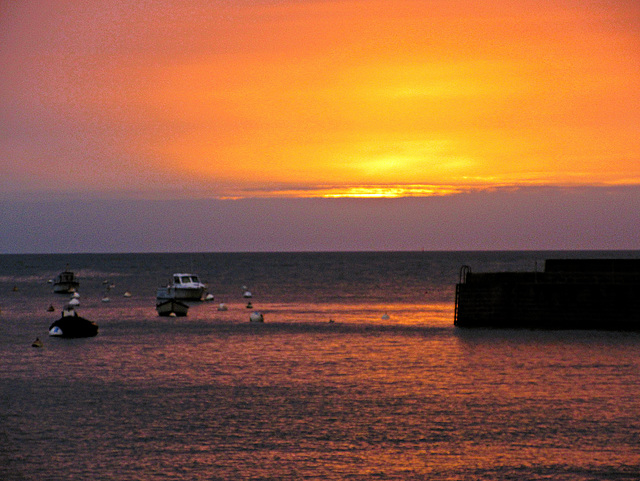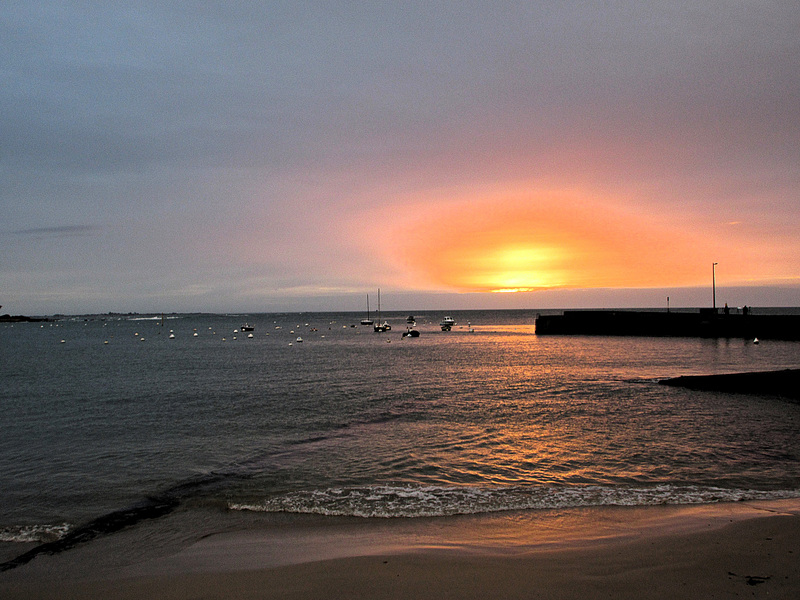solstice d'hiver,


le solstice d'hiver correspond au moment de l'année où la trajectoire du soleil, vue de la terre, atteint son maximum méridional (dans l'hémisphère nord) ou septentrional (dans l'hémisphère sud). Autrement dit, sous nos latitudes, au moment du solstice d'hiver, le soleil ne s'élève que de 18° par rapport à l'horizon (quand durant le solstice d'été, il est visible à 65° d'altitude, toujours par rapport à l'horizon). C'est aussi le jour où l'inégalité du jour et de la nuit est maximale, avec un maximum de nuit dans l'hémisphère nord et un maximum de jour dans l'hémisphère sud (qui vit en réalité son solstice d'été).
Les durées du jour et de la nuit dépendent de la latitude ainsi que du lieu d'habitation. Globalement, le jour du solstice d'hiver, il fait jour à peine plus de 8 heures dans l'hémisphère nord. Pour une nuit qui s'étale donc quasiment sur les deux tiers d'un cycle de 24 heures, soit 16 heures !
The winter solstice corresponds to the time of year when the trajectory of the sun, seen from the earth, reaches its southern (in the northern hemisphere) or northern (in the southern hemisphere) maximum. In other words, in our latitudes, at the time of the winter solstice, the sun only rises 18° from the horizon (when during the summer solstice, it is visible at 65° altitude, always relative to the horizon). It is also the day when the inequality of day and night is maximum, with maximum night in the northern hemisphere and maximum day in the southern hemisphere (which is actually experiencing its summer solstice) .
The lengths of day and night depend on latitude and location. Overall, on the day of the winter solstice, it is light for just over 8 hours in the northern hemisphere. For a night which therefore spans almost two-thirds of a 24-hour cycle, or 16 hours!

Translate into English
Les durées du jour et de la nuit dépendent de la latitude ainsi que du lieu d'habitation. Globalement, le jour du solstice d'hiver, il fait jour à peine plus de 8 heures dans l'hémisphère nord. Pour une nuit qui s'étale donc quasiment sur les deux tiers d'un cycle de 24 heures, soit 16 heures !
The winter solstice corresponds to the time of year when the trajectory of the sun, seen from the earth, reaches its southern (in the northern hemisphere) or northern (in the southern hemisphere) maximum. In other words, in our latitudes, at the time of the winter solstice, the sun only rises 18° from the horizon (when during the summer solstice, it is visible at 65° altitude, always relative to the horizon). It is also the day when the inequality of day and night is maximum, with maximum night in the northern hemisphere and maximum day in the southern hemisphere (which is actually experiencing its summer solstice) .
The lengths of day and night depend on latitude and location. Overall, on the day of the winter solstice, it is light for just over 8 hours in the northern hemisphere. For a night which therefore spans almost two-thirds of a 24-hour cycle, or 16 hours!

Patrick Brandy, Nouchetdu38, Dominique 60, Paolo Tanino and 16 other people have particularly liked this photo
- Keyboard shortcuts:
Jump to top
RSS feed- Latest comments - Subscribe to the comment feeds of this photo
- ipernity © 2007-2025
- Help & Contact
|
Club news
|
About ipernity
|
History |
ipernity Club & Prices |
Guide of good conduct
Donate | Group guidelines | Privacy policy | Terms of use | Statutes | In memoria -
Facebook
Twitter











Wünsche noch ein schönes 4. Adventwochenende,liebe Grüße Güni :))
Bon weekend. Amitiés
Bonne et heureuse fin de semaine paisible et reposante.
Bonne soirée mon amie.
Annaig56 club has replied to Nicole Merdrignac clubAdmired in: www.ipernity.com/group/tolerance
Merci pour les infos.
Sign-in to write a comment.